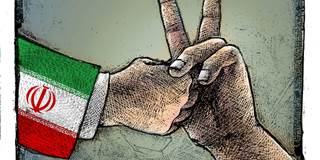Anatomy of a Revolution Delayed
The ongoing conflict between Iran’s rulers and the Iranian public is the result of a head-on collision between two contradictory forces: whereas public attitudes in Iran have become more liberal in recent years, power has shifted from conservative pragmatism toward a much more militant fundamentalism.
The ongoing conflict between Iran’s rulers and the Iranian public is the result of a head-on collision between two contradictory forces. In recent years, public attitudes in Iran have become more liberal. At the same time, power has shifted from conservative pragmatism toward a much more militant fundamentalism. The call by the most important group of Iran’s clerics for the election results to be thrown out is but the latest sign of the fight back of both the reformist and pragmatic conservative factions.



The ongoing conflict between Iran’s rulers and the Iranian public is the result of a head-on collision between two contradictory forces. In recent years, public attitudes in Iran have become more liberal. At the same time, power has shifted from conservative pragmatism toward a much more militant fundamentalism. The call by the most important group of Iran’s clerics for the election results to be thrown out is but the latest sign of the fight back of both the reformist and pragmatic conservative factions.